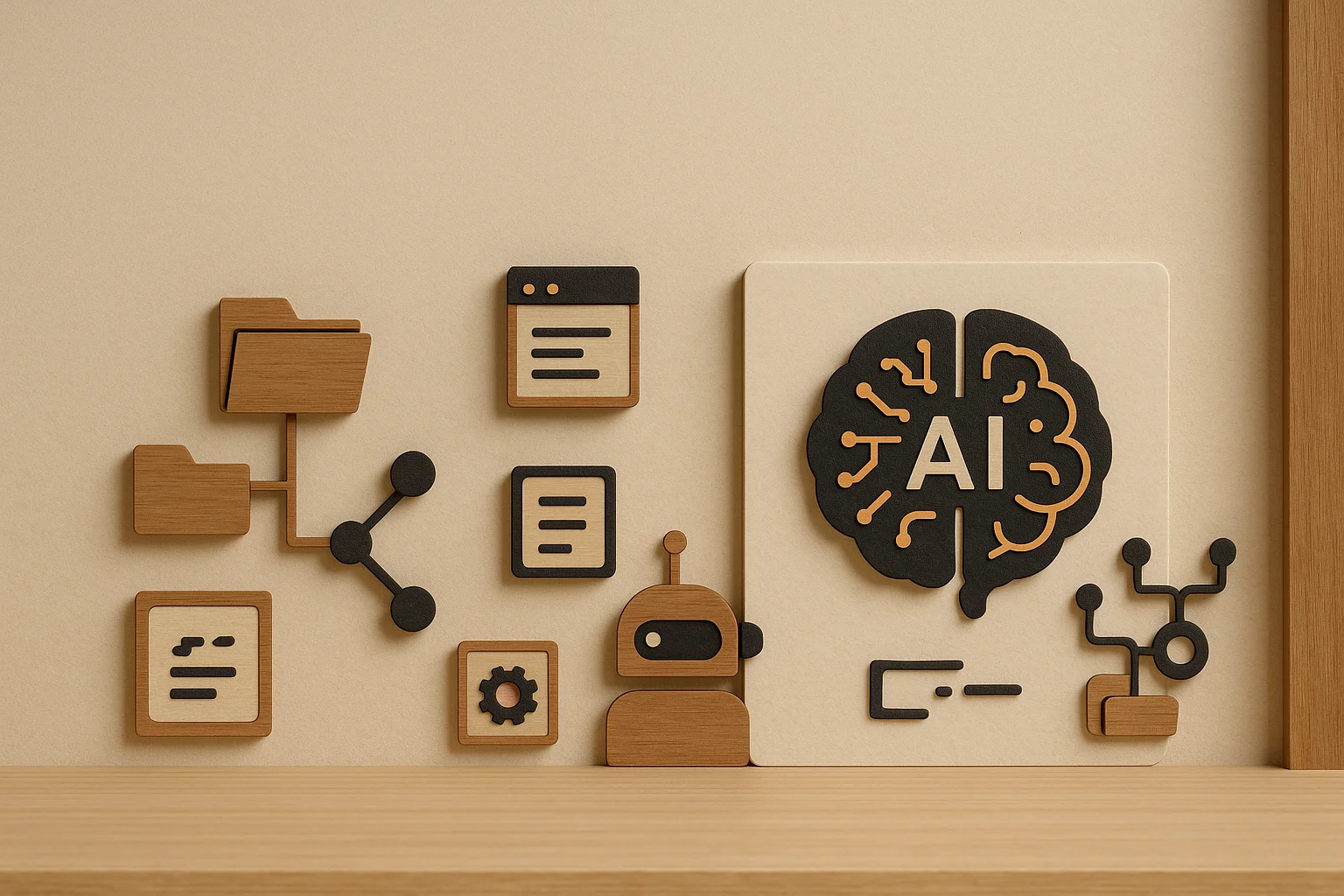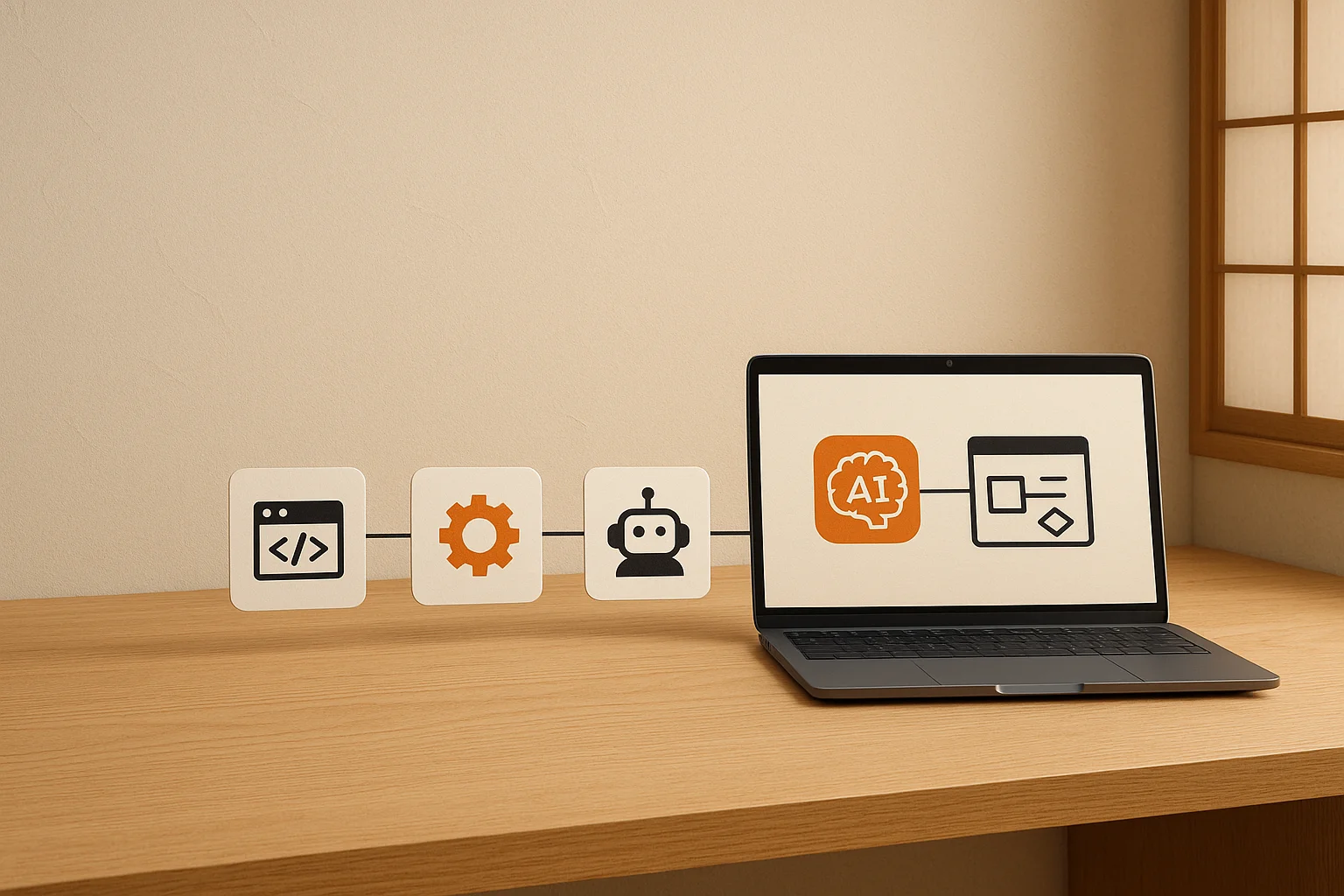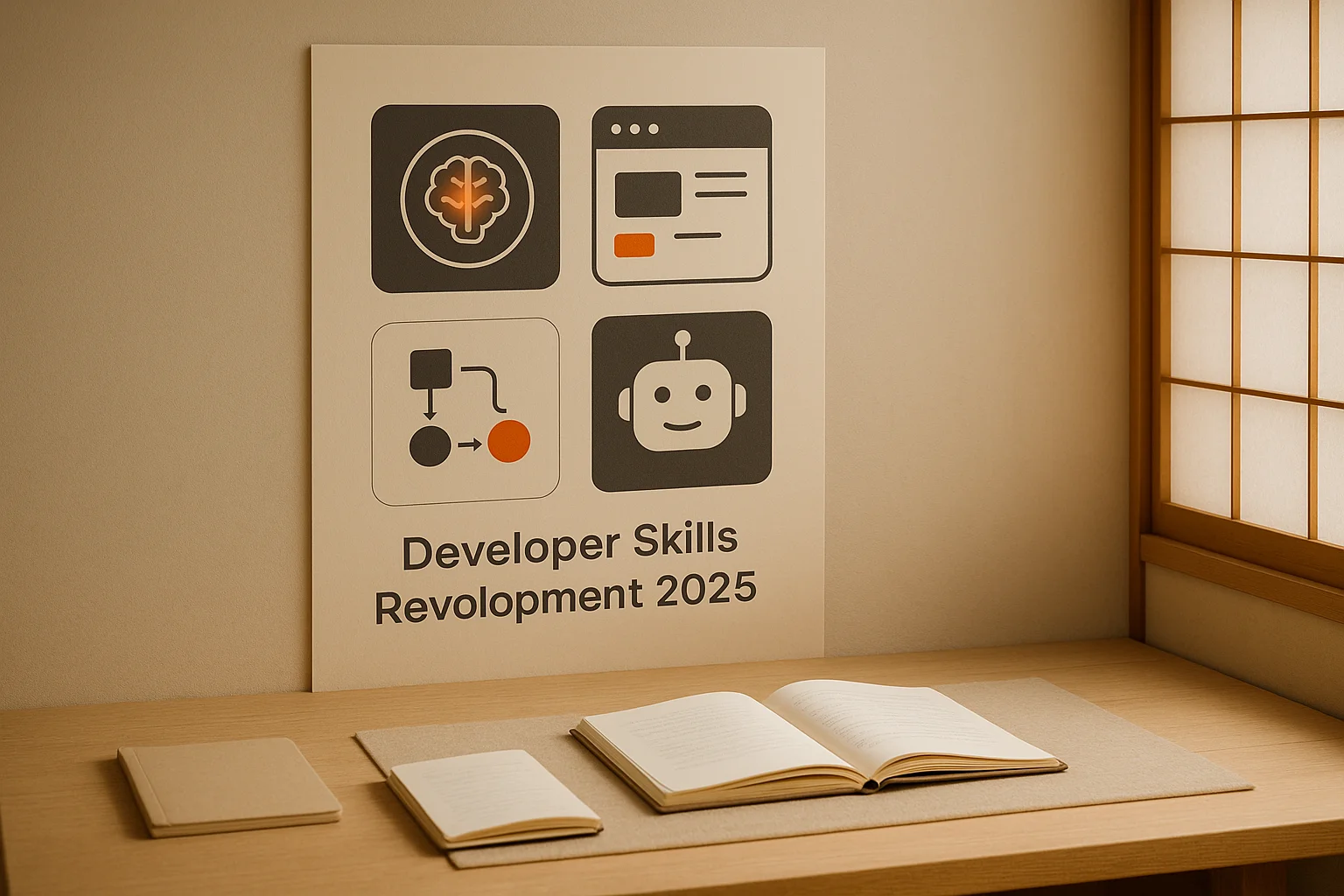Structuring Your Codebase for AI Tools: 2025 Developer Guide

With 82% of developers using AI coding assistants daily or weekly in 2025, how you structure your codebase directly impacts AI effectiveness. Poor organization leads to context rot, missed dependencies, and suboptimal code generation. This comprehensive guide covers proven strategies for organizing codebases that maximize AI tool performance while maintaining developer productivity.
Key Takeaways
- •Context is critical: 65% of developers report missing context during refactoring, with 26% citing improved contextual understanding as their top AI tool improvement request
- •Monorepo advantage: Modern AI models with 128K-1M token context windows favor monorepos for cross-component understanding and intelligent code generation
- •AGENTS.md specification: Dedicated agent instruction files provide predictable context for AI tools across different platforms
- •Context engineering evolution: 2025 focus shifts from prompt engineering to systematic context management and codebase intelligence
The Context Crisis in AI-Assisted Development
As AI coding assistants move from experimentation to core development workflows, a critical challenge has emerged: context rot. Unlike human developers who accumulate project knowledge over time, AI tools rely entirely on the information available in their context window at the moment of code generation.
Recent research reveals the scope of this problem: 65% of developers experience missing context during refactoring tasks, 60% during test generation, and 38% of teams using six or more AI tools still feel "context-blind" regularly. This isn't just an inconvenience—missing context fundamentally distorts how developers assess AI performance and undermines the efficiency gains these tools promise.
The Context Window Revolution
AI models in 2025 offer unprecedented context capabilities that fundamentally change how we should think about codebase organization:
Current Context Limits:
- • Gemini 2.5 Pro: 1 million tokens
- • Claude 3.7 Sonnet: 200,000 tokens
- • OpenAI GPT-4o: 128,000 tokens
- • Mistral Medium 3.1: 128,000 tokens
Practical Capacity:
- • 1 token ≈ 4 characters or ¾ word
- • 100K tokens ≈ 75,000 words
- • ~300-400 pages of code context
- • Entire medium-sized applications
Monorepo vs. Multi-Repo: The AI Perspective
The rise of AI coding assistants is subtly shifting the repository structure debate. While traditional considerations focused on team coordination and deployment complexity, AI effectiveness introduces new variables that favor unified codebases.
The Monorepo Advantage for AI Tools
Context Continuity Benefits
Cross-Component Understanding
AI copilots can trace how data structures flow from backend models to frontend services, understanding the complete application architecture within a single context window.
- • Frontend consumption of API endpoints
- • Data model consistency across languages
- • Shared utility function usage patterns
- • Configuration consistency across services
Intelligent Code Generation
When writing a Python data processing script that needs to match a C# API model, the AI already knows your model structure because it's in the same repository context.
- • Type-safe cross-language code generation
- • Consistent error handling patterns
- • Shared configuration usage
- • Architectural pattern adherence
Multi-Repo Considerations and Mitigation Strategies
Multi-repos provide clearer separation and tighter control, but require deliberate strategies to maintain AI effectiveness:
Challenges
- • Context switching between repositories
- • Limited cross-service understanding
- • Repeated configuration patterns
- • Manual dependency management
- • Fragmented shared utilities
Mitigation Strategies
- • Sync OpenAPI specs across repositories
- • Share TypeScript definitions via packages
- • Maintain unified documentation sites
- • Use consistent AGENTS.md files
- • Implement shared linting/formatting configs
The AGENTS.md Specification: Context for AI Tools
The AGENTS.md specification introduces a standardized approach to providing AI coding agents with project-specific context. Unlike README files designed for human consumption, AGENTS.md focuses on the operational information AI tools need to work effectively.
Core AGENTS.md Structure
Essential Sections
Project Overview
Concise description of the project's purpose, architecture, and key components that AI agents need to understand before making suggestions.
Build and Test Commands
Exact commands AI agents should run to validate their code changes, including dependency installation, compilation, and testing procedures.
Code Style Guidelines
Specific formatting preferences, naming conventions, and architectural patterns the AI should follow when generating code.
Example AGENTS.md Structure:
# AGENTS.md ## Project Overview Next.js 15 marketing site with TypeScript, Tailwind CSS, and Shadcn/ui components. ## Setup Commands - Install deps: `pnpm install` - Start dev server: `pnpm dev --port $(shuf -i 3000-9999 -n 1)` - Build: `pnpm build` - Lint: `pnpm lint` ## Code Style - TypeScript strict mode enabled - Use `@/` imports for components - Kebab-case for file names - Components use "use client" when interactive ## Testing - Run tests: `pnpm test` - Coverage target: 80% - Test files in `__tests__` directories
Advanced Context Management Strategies
Beyond basic file organization, sophisticated development teams implement systematic approaches to context management that prevent AI tools from becoming context-blind as projects grow.
RAG-Based Codebase Intelligence
Modern Context Indexing Solutions
Leading AI development platforms now operate with codebase awareness through Retrieval-Augmented Generation (RAG) approaches that maintain continuous codebase indexing and analysis:
Continuous Indexing
- • Real-time codebase analysis and embedding
- • Semantic understanding of code relationships
- • Cross-file dependency mapping
- • Architecture pattern recognition
Intelligent Retrieval
- • Context-aware code suggestions
- • Relevant example identification
- • Convention-compliant generation
- • Quality-focused workflows
File Structure Best Practices for AI Tools
The way you organize files and directories directly impacts how effectively AI tools can understand and navigate your codebase. These patterns have emerged from analyzing successful AI-assisted development workflows.
Directory Structure Patterns
Conventional Organization
AI tools perform best with predictable, conventional directory structures that follow established patterns:
project-root/ ├── AGENTS.md # AI agent instructions ├── README.md # Human documentation ├── package.json # Dependencies and scripts ├── tsconfig.json # TypeScript configuration ├── .eslintrc.json # Linting rules ├── src/ │ ├── components/ # Reusable UI components │ │ ├── ui/ # Base UI primitives │ │ └── features/ # Feature-specific components │ ├── lib/ # Utility functions and configurations │ ├── hooks/ # Custom React hooks │ ├── types/ # TypeScript type definitions │ └── app/ # Next.js app directory ├── docs/ # Project documentation ├── tests/ # Test files and utilities └── tools/ # Build tools and scripts
Context Engineering vs. Prompt Engineering
The evolution from prompt engineering to context engineering represents a fundamental shift in how we approach AI-assisted development. Rather than crafting perfect prompts for individual requests, the focus moves to designing systems that systematically provide relevant context.
Context Engineering Principles
Systematic Information Gathering
Context engineering focuses on creating systems that automatically gather relevant details from multiple sources and organize them within the AI model's context window.
- • Automated dependency analysis and inclusion
- • Related file identification and loading
- • Configuration and environment context
- • Historical change pattern analysis
Workspace Context Management
Maintain project structure and hierarchy when importing code into AI tools, preserving relationships between components and ensuring context freshness.
- • Project structure preservation during analysis
- • Real-time synchronization with local changes
- • Module dependency mapping
- • Inter-component relationship tracking
Preventing Context Rot at Scale
As codebases grow, maintaining AI tool effectiveness requires proactive strategies to prevent context degradation and ensure consistent code quality across large development teams.
Automated Context Health Monitoring
Documentation Freshness
Implement automated checks to ensure AGENTS.md files, API documentation, and architectural diagrams remain synchronized with code changes.
- • AGENTS.md validation in CI/CD pipelines
- • API specification drift detection
- • Architecture diagram update triggers
- • Dependency documentation synchronization
Context Coverage Analysis
Monitor which parts of your codebase lack sufficient context for AI tools and prioritize documentation improvements.
- • Undocumented component identification
- • Missing type definition detection
- • Configuration gap analysis
- • Cross-reference completeness checks
References and Further Reading
Key Sources
- [1] Qodo. "State of AI Code Quality in 2025." 2025.
- [2] AGENTS.md Specification. "README for Agents: Project Context for AI Coding Tools." 2025.
- [3] Repomix. "Pack your codebase into AI-friendly formats." 2025.
- [4] Qodo. "RAG for a Codebase with 10k Repos: Implementation Guide." 2025.
- [5] GitLab. "AI Code Generation Explained: A Developer's Guide." 2025.
Ready to optimize your codebase for AI tools? Propel's AI-powered code review works better with well-structured codebases. Our context-aware analysis adapts to your organization patterns and helps maintain quality at scale.
Optimize Your Codebase for AI
Propel's AI-powered code review works better with well-structured codebases. Discover how our context-aware analysis helps maintain quality at scale.


